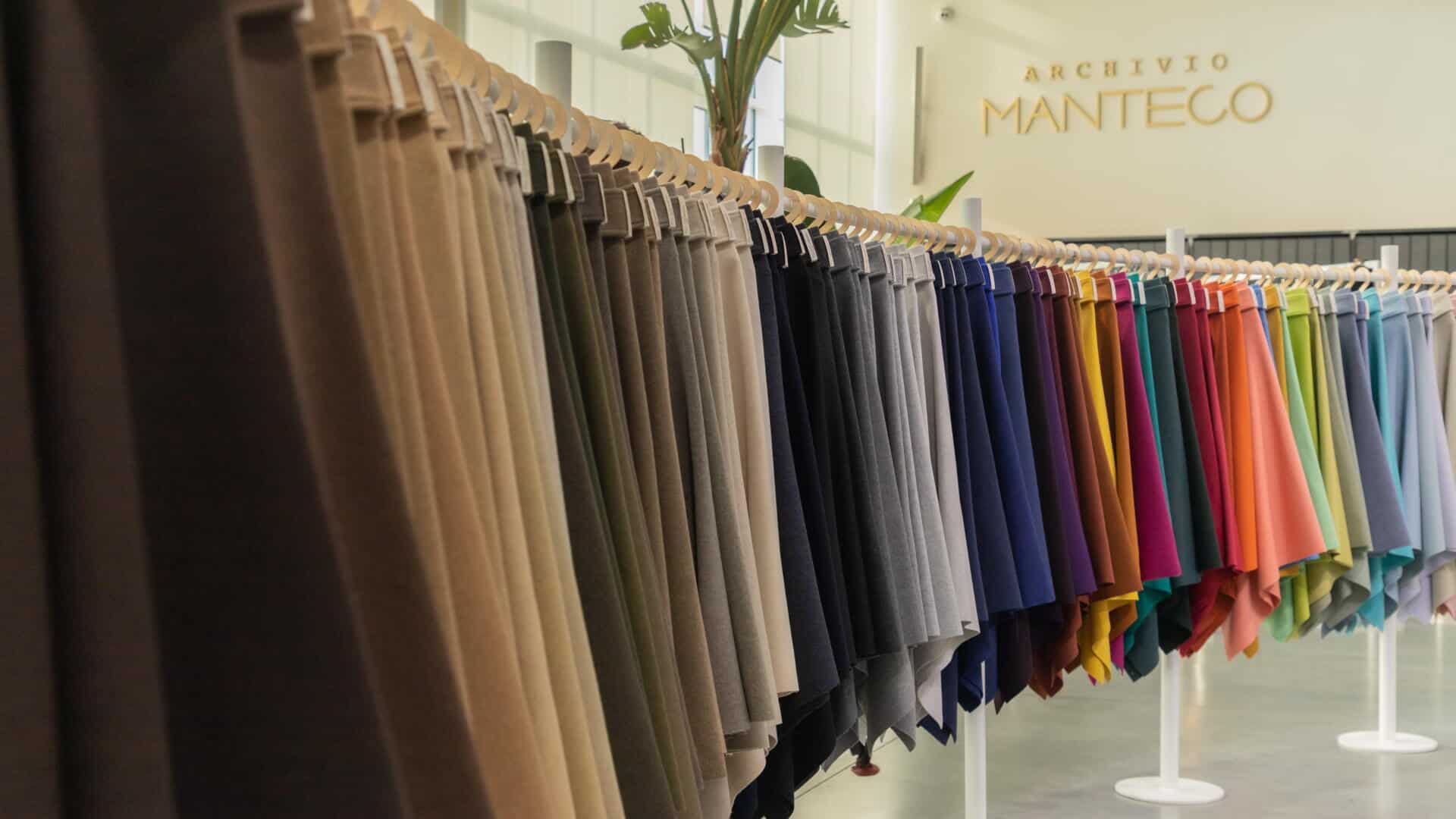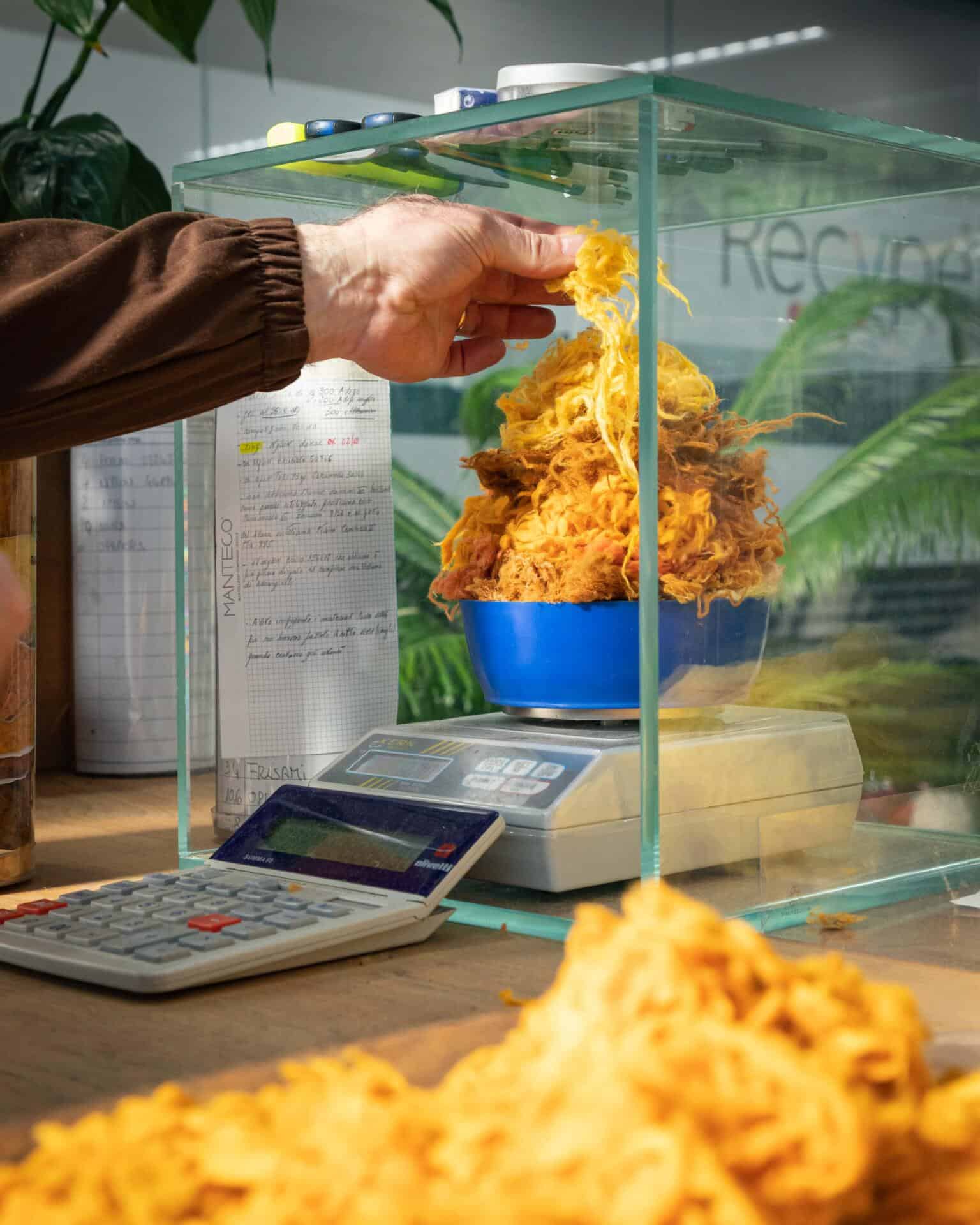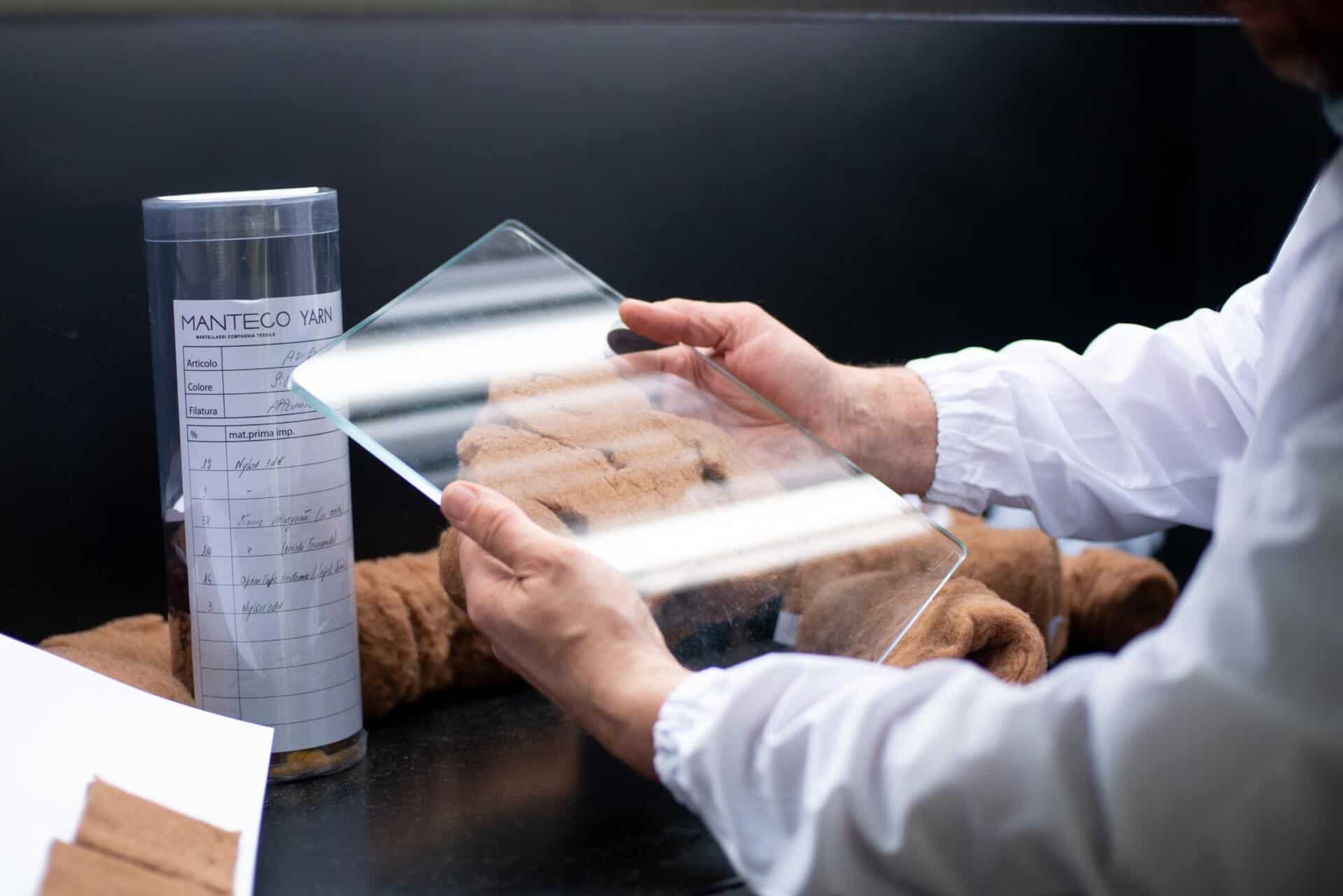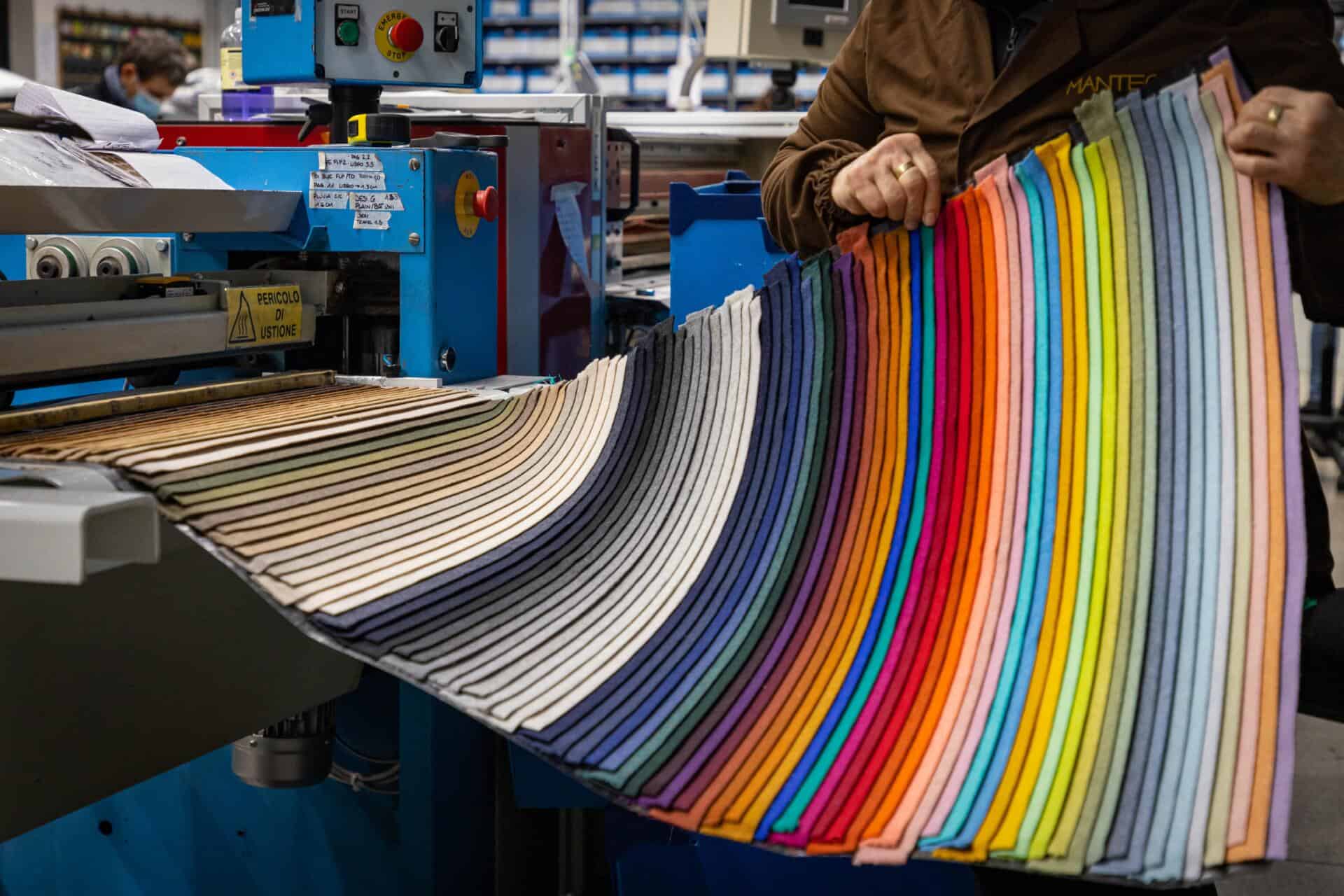How are recycled wool colors created without dyeing?
Discover how recycled wool colors are made
When it comes to recycled wool garments and accessories, beautiful and unique colors are created without added dyes and chemicals
Traditional chemical dyeing processes for wool guarantee an infinite chromatic variety and an easy reproducibility, but they have a significant impact on the environment, especially in terms of water consumption, power usage and chemical pollution. However, this is valid just for virgin wool fabrics, since when it comes to recycled wool fabrics, there’s a fascinating and sustainable way to create new colors, and it simply takes advantage of the colors that garments and scraps used to have in their previous life. It is an actual art of creating wool colors with no dyes and chemicals, let’s see how it works.

1) Obtaining colorful fibers from pre- and post-consumer garments and scraps

It all starts right at the beginning of the wool recycling process (Read more on what’s behind a recycled wool fabric). During the initial cleaning and sorting process done by the cenciaiolis (or ragmen), pre and post consumer wool garments and scraps are divided by composition and – most importantly – by color, in order to form homogeneous bales of rags that are ready to be recycled. The latters are shredded (recycled) accordingly to obtain ‘new’ – and already colored – recycled wool fibers, all of this through a mechanical process that uses no chemicals and no additional dyes, as garments and scraps come already colored from their former life. For example, the colorful recycled wool fibers you see in the picture come from the recycling of numerous bales that contained different shades of yellow garments and scraps.
2) Choosing the ingredients for a new recycled wool color

Considering that millions of knits, garments and scraps are sorted and mechanically shredded every year, recycled wool warehouses are like a huge color archives. They’re filled with hundreds of bales, each one with recycled wool fibers of different colors and tones. Raw material artisans, also called Feltrinisti, draw from these bales, just as painter does from his colorboard, the ingredients they need to create a new recycled wool color.
3) Creating a recycled wool 'color recipe'

When brands or designers forward a specific color request for a recycled wool fabric or jersey, the process of creating a new color starts. Raw materials artisans use the ingredient recycled wool colors and mix them in specific percentages, creating an actual ‘color recipe’ on a small scale. Not only does this process define the new color, but also the composition that the new fabric will have. It is a real form of art that no school can teach, but just experience.
4) Carding the 'color recipe' to make a trial felt

The ‘color recipe’ is carded with a traditional machine ( called Cardina ) that cleans, mixes and parallelizes the different shades of recycled wool fibers. After 4-5 carding cycles to mix them as much as possible, the result is a trial felt ( or Feltrino ), a recycled wool puff that shows the new, mélange color obtained, with no dyes and chemicals.
5) Checking if the trial felt's color matches the requested color

Raw material artisans then compare the requested color with the one achieved through the carding of the ‘color recipe’. If colors do not match, artisans repeat the whole process until the trial felt’s color perfectly matches the requested color.
6) A new recycled wool color is born

Once the trial felt’s color is approved, the ‘color recipe’ is archived and officially becomes a new recycled wool color. When an order is placed, the ‘color recipe’ is adapted (just like a kitchen recipe when you cook for different numbers of people) and all ingredients are multiplied by the kgs of yarns that must be produced. Once the multiplication is done, materials are sent to the spinning mill, where they will be carded, spinned and twisted to produce ‘new’ recycled wool yarns; which will then be woven and finished to create recycled wool fabrics (Read more on what’s behind a recycled wool fabric).
This way of creating colors has almost no limits, as by mixing different shades of fibers every tone can be achieved.
At Manteco, thanks to our Recype® process, we are able to create more than 1000 recycled wool colors, while preserving resources and cutting emissions, as every year – on average – we save 19.000 kgs of dyestuff, 11.000 kgs of chemical auxiliaries, 722.127 kgs of CO2-eq. Emissions, 10.641.878 MJ of energy, 122.707.000 liters of water. All resources that would have been used if colors were made with chemical dyeing.

About Manteco, Italian premium textiles and circularity since 1943
After decades in the fashion world, in 2018, we have created the Manteco Academy project, through which we give webinars, in-person lessons and workshops on eco-design, circular economy and sustainability to numerous fashion schools, technical universities and brands worldwide. Thanks to this educative commitment and our heritage, we are often invited as guest speaker at events, panels, podcasts and conferences about sustainable fashion and circular economy.

